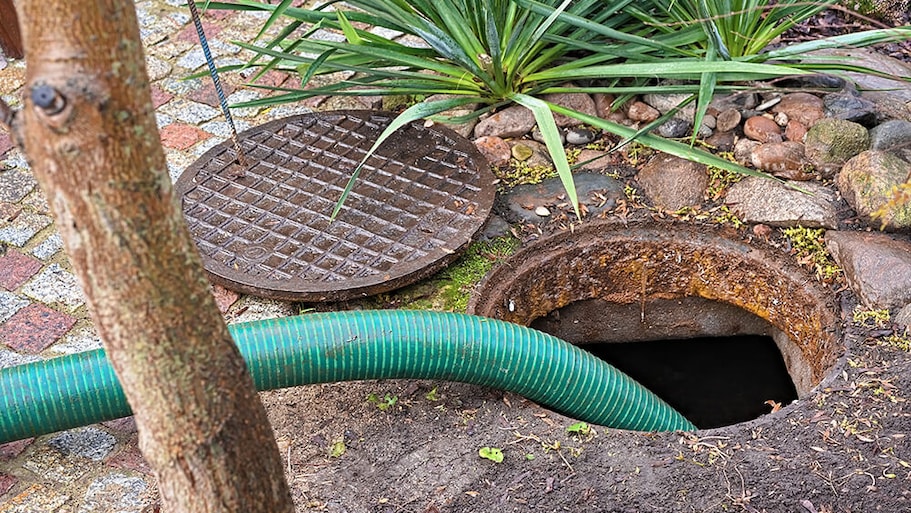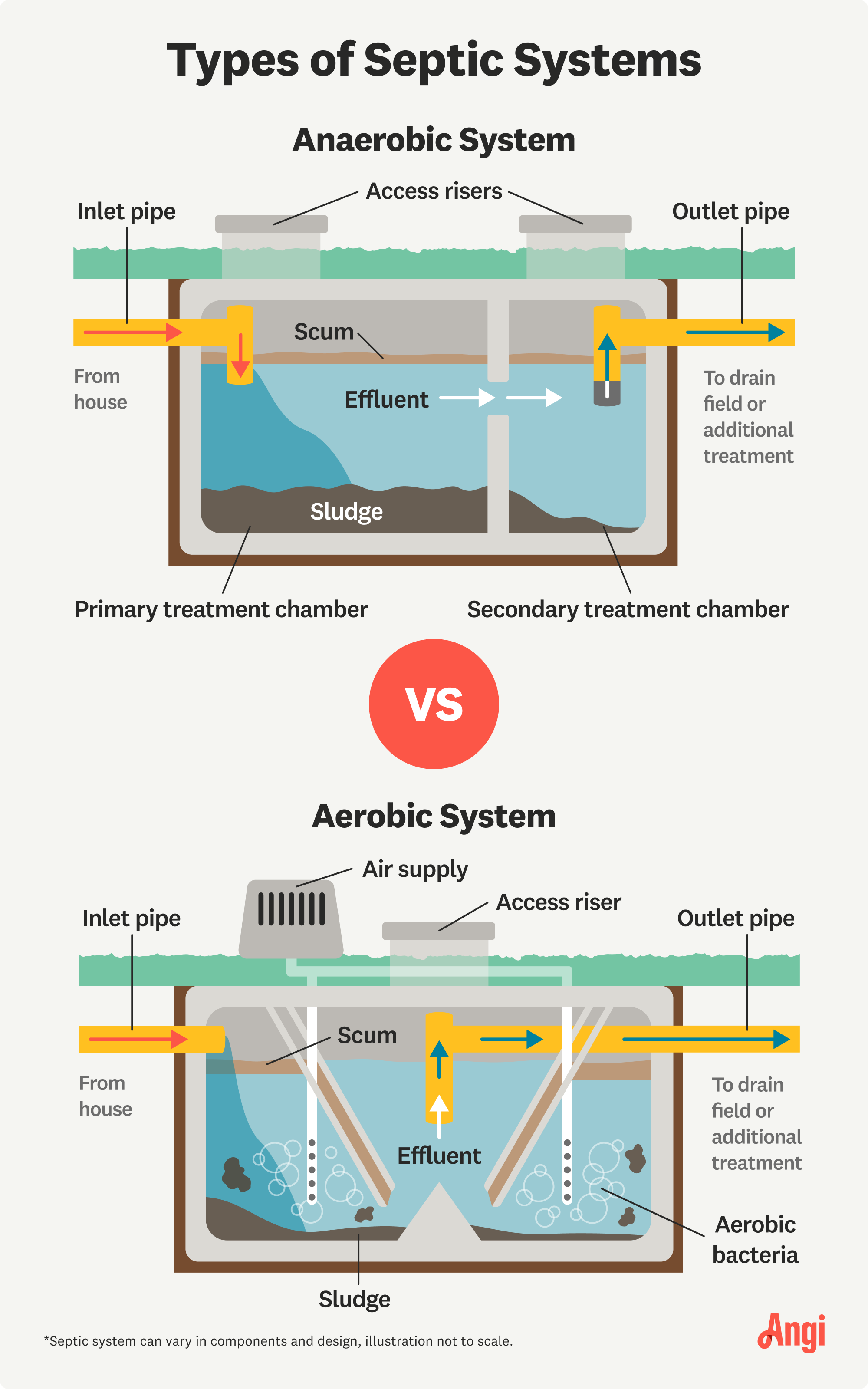
Caring for your septic system is crucial to ensuring its long life. But how much does it cost to pump a septic tank? We explore the different cost factors.
The average septic system costs between $3,051 and $9,887 in Washington, D.C., with an average of $6,268. Your septic pro will consider the system type, size, and location for a personalized quote.


Septic systems can be found in the more rural areas of Virginia and Maryland.
The average home in Washington, D.C., needs a 1,000-gallon septic tank.
If you live near the Potomac River, you may need a mound system to compensate for the high water table.
Contractors must be licensed, but the licensure depends on the county.
Most homes in Washington, D.C., are connected to the local sewer system, but once you start moving into the suburbs, you may come across septic systems. This is most common in the more rural areas of Virginia, where there isn’t a strong public sewer infrastructure, or it's cost costly to hook up your home. The cost to install a septic system in Washington, D.C., is $6,268 on average, with most homeowners spending between $3,051 and $9,887. Here is how the costs break down.
The cost to install a septic system in the Washington, D.C., area depends on several factors, mainly the size and type of system, the amount of work needed to prep the land, and the materials.
The septic tank size you need will depend on the number of bedrooms your home has. For a three- or four-bedroom home, you’d need a 1,000-gallon septic tank, which costs $900 to $1,500 for the tank alone.
Larger houses tend to have more sinks, toilets, bathtubs, and other wastewater sources that flow into the septic tank. A small septic tank costs the least, as the price rises with the size.
| Tank Size (Gallons) | Number of Bedrooms | Average Cost Range |
|---|---|---|
| 500 | 1 | $500–$900 |
| 750 | 2 | $700–$1,200 |
| 1,000 | 3–4 | $900–$3,200 |
| 1,200 | 5–6 | $1,200–$3,800 |
| 1,500 | 6–7 | $1,500–$4,100 |
Septic tanks are commonly made of plastic, concrete, or fiberglass, with fiberglass tending to be the most expensive. Here’s how much a tank costs based on each material.
| Material | Average Cost (Tank Only) | Pros and Cons |
|---|---|---|
| Concrete | $700–$2,400 | Highly durable, prone to cracks, most commonly used tank |
| Plastic | $500–$3,200 | Lightweight and easy to install, lowest durability, affordable installation |
| Fiberglass | $1,200–$4,100 | Lightweight and easy to install, resists cracking and algae, most expensive tank |

Each septic system type comes with its own set of pros and cons. While anaerobic systems are relatively low-maintenance, they aren’t great for small properties. Similarly, anaerobic systems can do well in small spaces but require extra work.
| Anaerobic | Aerobic |
|---|---|
| Anaerobic bacteria break down waste | Aerobic bacteria break down waste |
| More affordable | More expensive |
| Uses fewer chemicals | More efficient |
| Needs a larger leach field | Good for smaller properties |
Anaerobic: Anaerobic systems are more common and cost $3,000–$8,000. They’re less costly than aerobic systems and don’t need extra power or chemicals, but they’re less efficient and require a larger leach field. A pipe runs from the house to the septic tank, where another pipe runs into the leach field. Anaerobic bacteria break down solid waste before the system distributes the wastewater into the soil.
Aerobic: Aerobic septic systems utilize oxygen pumped into the tank to activate bacteria that feed on the solid waste. They’re more expensive at $10,000–$20,000 but are more efficient and work well on smaller properties. They require additional power to run, so hook yours up to a power generator in case of a power outage. Otherwise, these systems can plug into your property’s main power source.
Each type of septic tank installation has requirements. You’ll need to survey the land and test the soil to make sure your system will work—and if not, you’ll have to make adjustments. For example, areas closer to the Anacostia or Potomac River are prone to higher groundwater levels, which may not work for a traditional septic system. In that case, you may need to install a mound septic system, which can cost twice as much.
Here’s how site prep costs break down:
Land Survey: You’ll need to get a land survey before installing a septic system to ensure your plans fall within property lines. Expect to spend $330–$900 to hire a licensed land surveyor.
Percolation Test: Before the installation, you need a local perc test pro to perform a percolation test. The test measures water drainage in the soil, soil type, and the height of each sediment layer on your property to determine the best type of septic system for you. The cost to test soil is $700–$2,000.
Leach Field Installation: Septic tank systems consist of a septic tank and a trench referred to as a leach field or drain field. This section of the system transports the wastewater back to the soil. Drain field installation costs $5,000–$12,000.
Septic system installation is a complex job that requires specialized knowledge and skills. You’ll need to hire a local septic tank company to handle it and plan for labor costs.
Labor for septic tank installation in Washington, D.C, is between $1,500 and $4,000, but it could cost more if it’s not a straightforward job and your contractor runs into issues. Overall, professional labor accounts for 50% to 70% of the total cost.
Your septic tank installer will need a license, but requirements vary in the greater Washington, D.C., area where homes may be located in Virginia or Maryland. For example, in Maryland, installers must be registered with the Board of On-Site Wastewater Professionals, and there are different certifications for mound installers and at-grade installers. Make sure to double-check your contractor’s qualifications.
Before you can start your installation, you’ll need a septic system permit, which costs between $250 and $1,800, depending on the type and location. The requirements vary because the Washington, D.C., area includes counties in different states.
For example, homeowners in Montgomery County in Maryland need to obtain an On-Site or Individual Sewage Disposal System Permit from the Montgomery County Department of Permitting Services before installing a new septic system. Your installer can help pull the permit.
According to the National Association of Home Builders, about 25% of the new homes in the South Atlantic region have septic systems. This area includes both Virginia and Maryland, as well as the Carolinas and Florida. Since it’s a normal occurrence and a feature based on necessity, just having a septic system won’t impact your home value.
However, the quality of your septic system impacts your home value. If your septic system is poorly maintained or failing, it will decrease your property value. In this case, installing a new system or making necessary septic tank repairs can help you maintain the value of your home.
Home is the most important place on earth, which is why Angi has helped more than 150 million homeowners transform their houses into homes they adore. To help homeowners with their next project, Angi provides readers with the most accurate cost data and upholds strict editorial standards. We survey real Angi customers about their project costs to develop the pricing data you see, so you can make the best decisions for you and your home. We pair this data with research from reputable sources, including the U.S. Bureau of Labor Statistics, academic journals, market studies, and interviews with industry experts—all to ensure our prices reflect real-world projects.
Want to help us improve our cost data? Send us a recent project quote to [email protected]. Quotes and personal information will not be shared publicly.
From average costs to expert advice, get all the answers you need to get your job done.

Caring for your septic system is crucial to ensuring its long life. But how much does it cost to pump a septic tank? We explore the different cost factors.

You should do a septic inspection once every one to three years to ensure you don’t have any issues. Learn about septic inspection costs before scheduling.

Does your property have poor ground water or soil conditions? Learn about engineered septic system cost, types, and factors for you to consider.

Septic tanks are kept underground, so checking the levels inside can be a challenge. Learn how to check if a septic tank is full with this guide.

Not all cesspool messes need a total clean-out. Learn how to clean a cesspool so you know whether you can tackle it yourself and when to call in a pro.

A sewage smell outdoors is not only gross, but it indicates a possible health hazard. Learn how to get rid of the septic smell outside and when to call a pro.